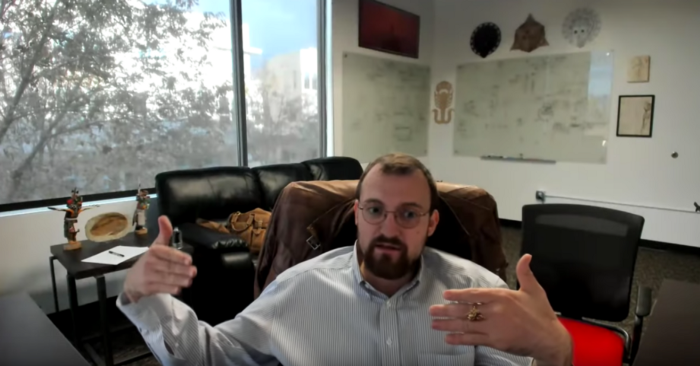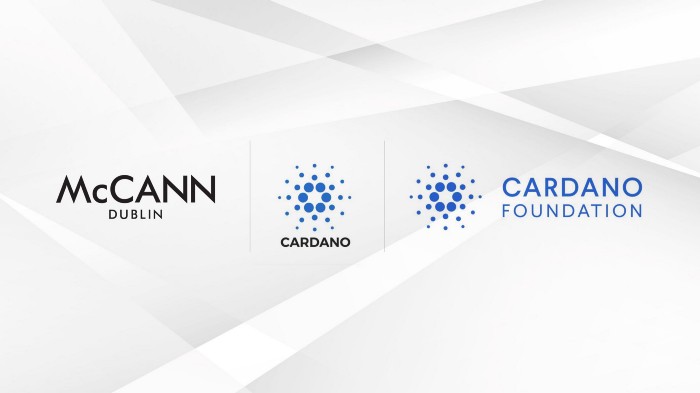Is it possible to commercialize the public network?
Marketing of a cryptocurrency might seem a bit strange since people expect that they will choose what they want to use. However, every project can take a different strategy since it focuses on a different group of users.
The Cardano project plans to raise its brand awareness and commercialize its public network. In the context of cryptocurrencies, this may at first glance seem like a somewhat strange plan. But the opposite may be true. Let’s see what this can bring to the project.

Decentralization is not just a protest against the existing order
Cryptocurrency projects aim in particular for wider adoption. It is not yet the case, because people perceive cryptocurrencies mainly as something unknown, possibly illegal and have them associated with high volatility and potential risk investment. Cryptocurrencies originated as defiance against banks and the financial sector, and the creation of Bitcoin was driven by a man or people close to crypto punk. Thus, global public marketing is out of the question. However, some investors like to talk about Bitcoin and its price in the future. You can see some billboards related to crypto on the streets and there are many Bitcoin ATM all around the world.
People do not realize one important thing. Decentralization does not necessarily have to be associated with resistance to the traditional system and values. The first generation of cryptocurrencies originated as protest projects for individuals in need, but this does not mean that further evolution cannot come closer to the masses and adhere to the basic principles of the original idea. What if a project were created that would offer people all the benefits of decentralization, would be technically capable of mass adoption, cooperate with regulators and governments, and would bring us all closer to a decentralized future.

If we are to think about the success of decentralization, most people in the world must be involved. Not just a defiant minority with ideals that go beyond what most people require. Most people living in a state do not want terrorism to be promoted, tax avoidance, or the gray economy to thrive. In the debate forums, we often see the idea that cryptocurrencies are good for alternative life and tax avoidance. This is an absolutely unacceptable attitude for the majority population in developed countries. Decentralization and payment of taxes are not necessarily inconsistent. This is just one example for all.
Most people do not even necessarily require 100% anonymity, as this may hinder the provision of some services and a wider connection to the physical world. For example, property ownership will always be associated with a specific person, and in some countries, the Land Register is publicly available for inspection. If decentralized banks are to be set up to take out a mortgage, working with a real identity will be essential. Moreover, there are different rules in each country and we will not get rid of the current state organizations and institutions. The global public network must, therefore, offer a solution that addresses the laws and regulations of different countries. Interoperability between public networks and current systems is required.
In some cases, people want to be sure that if they invest in something in a decentralized way, they actually own it. Ownership may require entry into a public database of the state or cooperation with the authority. Obviously it is not possible to work with anonymity here. If they support a public project, they want to have some legal certainty that the project is being implemented, and if not, the fraudster will somehow be blamed. Connecting the digital and physical world will have its limitations and working with identity can be a solution. Participants may not necessarily be publicly known right from the start, but in the event of problems, there must be some assurance that everything will be solved fairly, even at the expense of revealing identity. Anonymity may be a scale and might be conditional; it may not be a binary value.
Why build a brand
If a project is to succeed in mass-adoption, it is necessary to state exactly what the brand brings and who is behind it. People have some IT awareness nowadays, and they suspect that each protocol or service is backed by a particular company with a group of developers. It may be quite confusing and untrustworthy to come up with a protocol whose leader is unknown and no one stands outside.
People know that software can have bugs and that someone needs to be contacted if they themselves have a problem. Is it right for a public network to have a customer center or service desk? Of course yes. If people have a problem and don’t know who to turn to, the people will hardly gain confidence in the protocol. I know, we believe in code. But the code is always written by people and they tend to make mistakes. If IOHK proudly stands up for its Cardano protocol, it does not mean that the protocol is less decentralized. All the more so if decentralized project management is in place and the people, the stakeholders, will be the decision-makers.
Nor is the position of a strong leader harmful. Maybe the opposite. Behind successful IT companies has always been a strong leader or innovator. Charles Hoskinson makes a regular AMA and openly says about the current status of the project and what is planned to do. The project is managed in one direction and the team knows exactly what its vision is. In competing projects, the vision is often unclear and the development is to some extent fragmented. Everybody digs on their sand, but nobody solves important things because there is no firm responsible for the whole project. The leader, or team members, can clarify a problem and outline a solution. Other projects do this by writing an article that they post on the Internet. Often the same thing happens with wannabe anonymous projects, but it’s unnecessarily more mysterious. For a project aimed at mass adoption, it is perfectly okay to have a clear strong leader and the team. Cardano may seem like an ordinary IT company, but there is one fundamental difference. Cardano will be a public distributed network and it will be owned by ADA coins holders — by stake-holders.
When we look at the most successful projects in the Coinmarketcap, we see Brad Garlinghouse behind Ripple, Vitalik Buterin behind Ethereum, Charlie Lee behind Litecoin, Dan Larimer behind EOS. Who is behind Bitcoin? Is it anonymous creator Satoshi Nakamoto? For many people, Andreas Antonopoulos basically assumed this role. There is always someone who is the voice of the project.
Can anyone write to Charles Hoskinson and ask him to turn off Cardano? When the network starts, Charles won’t be able to. The network will be maintained by people around the world. IOHK, or another company, if people choose, will be responsible for maintaining the source code. Not for running the network. Decentralized project is hard to shut down and in the sense that project with regulators co-operates with no reason to shut down the network. Source code maintenance and further development can be a completely transparent process, and there is no threat to decentralizing the protocol itself. Adoption of the changes in the source code and responsibility for its operation will be taken by other people around the world, not by the team responsible for the quality of the source code. These two things need to be well distinguished and understood to differences in the context of decentralization.

The project strategy must be fully understandable to all team members and everyone must know what their role is. The respected leader must set the course and all others should meet the goals that lead to the delivery of high technology. If there are no experts, they need to be found and paid for. This cannot be an obstacle to the project. Commercialization of the project will ensure the necessary money for the project treasures. Cardano will have such a treasure and the rise in the price of coins will affect the resources and further funding of the project.
Building brand awareness can help Cardano to be mass-adopted and win people’s trust. People routinely use Microsoft, Amazon, Google, Facebook products, even if they know that some of them are misusing personal data. People trust these brands because the products usually work satisfactorily and are used by the majority of people. If a similar brand is to emerge from a decentralized world and stand next to renowned companies, they need to get people’s awareness, communicate what it brings, and build a strong market position. And it is not possible without promotion.
Don’t expect marketing to be used to promote the ability to invest in ADA coins. The project’s vision, its possibilities, and the benefits of decentralization will be promoted. This will help all other projects, including Bitcoin.
Cardano is being built to be adopted by all who wish to pursue decentralization. It can also be commercial banks or companies that want to offer people more reliable, cheaper, or more secure services. Cardano’s strength lies in its ability to replace intermediaries. If these unnecessary intermediaries are to stay here, they will have to offer services other than those they offer today. They will have to bring real added value to their customers. Not just charge their overpriced services.
Cardano must be a brand for a reliable product and, to some extent, a renowned partner. That’s why it makes sense to build your brand globally. One successful partnership can give rise to ten more. Brand building is also important for commercializing the protocol. Charles told in the AMA that once Shelley and Goguen were deployed, very aggressive marketing would come. This is also important. In addition to building wider awareness among people, higher coin prices will ensure greater protocol security and, most importantly, will satisfy investors. The security and decentralization of the project are based not only on the distribution of coins but also on their cost. The less room for individuals to buy more coins and gain a dominant position in making consensus the better for decentralization. So success in terms of coin prices is also important.
It is also important to realize that in today’s world of commerce, it is not easy to get through without advertising. This is simply a fact and, as we have said, Cardano is not a project for minorities in need. Cardano is to become a financial operating system with a global impact. So he cannot remain somewhere in the shadow of anonymity and protest. We perceive this as a very clever and important move in the context of what target group the project focuses on.
In today’s world, competition is very high and sooner or later it will also be seen in cryptocurrency projects. It is quite legitimate to admit and strive for primacy. If a project is to succeed and outperform its competitors, the team must use all available means to succeed. Marketing is one of these means that is commonly used.
Who will build the Cardano brand?
The Cardano Foundation has appointed McCann Dublin as the brand strategy and design agency for both Cardano and the Foundation. Learn more about McCANN Dublin: https://mccanndublin.com/
McCann is an American global advertising agency network, with offices in 120 countries. McCann Dublin cooperated with brands like Microsoft, LinkedIn, Norwegian Airlines, and others.

Bakyt Azimkanov, Global PR, Communications and Marketing Director at the Cardano Foundation, says:

Cardano becomes the most decentralized network
Media reported that Cardano became the most decentralized network in the crypto world. It happened half a year after the launch of the main-net. Let's have a look at the details. Read more
“Brand plays a key role in Cardano’s adoption as more organizations set to integrate the world’s first third-generation blockchain into their operations. The Cardano Foundation is proud to team up with McCann Dublin to reappraise the brand of what is yet to become the world’s leading blockchain platform. Since the concept of blockchain was introduced in 1991, the perception of the technology has shifted, and our collective understanding continues to change as we head towards a blockchain-complete era of the future. Therefore, we are privileged to have McCann Dublin, a team behind some of the biggest global brands, to take our brand to the next level.”
Jenny Paetzold, the Managing Partner of McCann Dublin, says:
“McCann Dublin is committed to creating change for and with our clients, making Cardano a natural fit for us. As the first blockchain platform to evolve from a scientific philosophy and research-first approach, they are actively creating change in their field. We know that cryptocurrency is both unstoppable and here to stay, and we’re delighted to be a strategic partner on this journey with Cardano and the Cardano Foundation. Our appointment is a testament to the agency’s creative approach, centered on brand building. We look forward to uncovering and building Cardano’s Truth Well Told.”
Note the last sentence. The aim is to increase people’s confidence in the project. This cannot be done just by creating an open-source project and expecting people to adopt it. The team must help with adoption. Ordinary people have no chance or desire to look at technical details. People do not solve the technical details of the TCP/IP network or Facebook protocols, yet they use these services daily. People want to consume trusted services, not to deal with technical details, and debate what protocol has a better consensus.
Increased brand awareness can bring an added benefit of less effort to ban the project. Once something becomes more familiar, it is more difficult to forbid it. People will ask more about the reasons for the ban. Thus, statesmen, bankers, and regulators will tend to cooperate and know who specifically to talk to. Dialogue is always welcome and it is definitely not possible to say that if you have someone to discuss, the project is necessarily centralized. The physical and digital worlds are two separate entities. The intermediary between the digital and physical world is the economic model of the protocol, which motivates people to keep it up and running.
Summary
As you can see, the marketing and commercialization efforts of the Cardano project make sense. It can help to wider adoption and people do not necessarily perceive cryptocurrencies as a speculative investment. Smart brand building can bring new people interested in decentralized services and that is what we all want.
